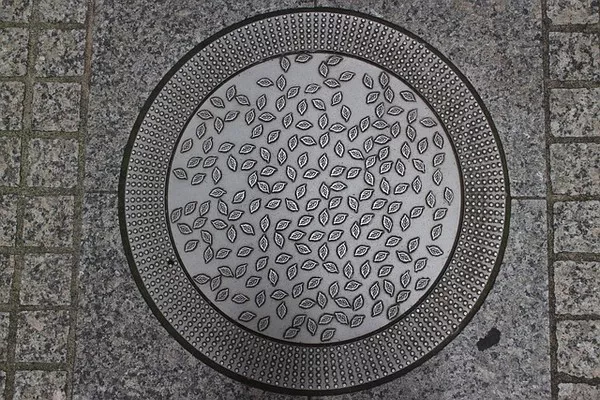Wastewater treatment stands as a cornerstone of modern environmental stewardship and public health protection. As urbanization and industrialization continue to surge, the demand for efficient wastewater treatment processes becomes increasingly imperative. This article provides a comprehensive overview of how wastewater treatment works, shedding light on its various stages and the significance of each in safeguarding both human health and the environment.
Introduction to Wastewater Treatment
Wastewater, often termed sewage or effluent, is generated from a multitude of sources including households, industries, and commercial establishments. This wastewater contains a wide range of pollutants, encompassing organic matter, nutrients, pathogens, and various chemicals. To prevent contamination of natural water bodies and to maintain a sustainable ecosystem, wastewater must undergo thorough treatment before being safely released into the environment.
The Fundamental Stages of Wastewater Treatment
1. Preliminary Treatment
The wastewater treatment process initiates with preliminary treatment, which involves the removal of large, non-soluble particles and debris through the use of screens and grit chambers. This preliminary step not only prevents damage to downstream equipment but also ensures smoother operation of subsequent treatment processes.
2. Primary Treatment
Primary treatment involves the physical separation of solid and organic materials from the wastewater. The wastewater is allowed to settle in a primary sedimentation tank, where gravity causes suspended solids to settle at the bottom, forming sludge. This sludge can be further processed for energy generation or other applications.
3. Secondary Treatment
Following primary treatment, the wastewater undergoes secondary treatment, which aims to remove dissolved and colloidal organic matter that was not separated during primary treatment. One of the most common methods of secondary treatment is the activated sludge process, where microorganisms are employed to biologically degrade the remaining organic matter. These microorganisms form flocs that help in settling the solid particles. After biological treatment, the mixture of water and sludge moves to a secondary sedimentation tank, where remaining particles settle out, and the treated water is decanted.
4. Tertiary Treatment
In certain cases, an additional tertiary treatment stage is necessary to achieve higher levels of pollutant removal. Tertiary treatment involves advanced processes that target specific pollutants such as nutrients (nitrogen and phosphorus), trace chemicals, and pathogens. Methods used in tertiary treatment may include sand filtration, chemical precipitation, and advanced oxidation processes.
5. Disinfection
After undergoing primary, secondary, and possibly tertiary treatment, the wastewater is disinfected to eliminate harmful pathogens that could pose risks to public health. Common disinfection methods include chlorination, ultraviolet (UV) irradiation, and ozonation. The choice of disinfection method depends on the treated water’s intended use and environmental regulations.
6. Sludge Treatment and Disposal
Throughout the treatment process, solid materials, including sludge from primary and secondary treatment, are generated. Sludge undergoes its own treatment to reduce its volume and make it suitable for disposal or beneficial reuse. Techniques like digestion, dewatering, and drying are employed to transform sludge into a more manageable form. Depending on its quality, sludge can be incinerated, used as a fertilizer, or even converted into biogas for energy generation.
Significance of Wastewater Treatment
The significance of wastewater treatment extends far beyond simple pollution prevention. Here are some key reasons why wastewater treatment is crucial:
1. Protection of Public Health
Untreated wastewater can carry a host of pathogens, including bacteria, viruses, and parasites, that cause waterborne diseases such as cholera, typhoid, and gastroenteritis. Proper treatment ensures that these harmful microorganisms are effectively removed, safeguarding public health and preventing outbreaks.
2. Preservation of Ecosystems
Discharging untreated or poorly treated wastewater into natural water bodies can lead to oxygen depletion, eutrophication, and the destruction of aquatic ecosystems. Proper wastewater treatment mitigates these negative impacts, preserving biodiversity and maintaining the ecological balance of water bodies.
3. Resource Conservation
Wastewater contains valuable resources, such as nutrients and energy-rich organic matter. Efficient treatment processes not only purify water but also allow for the recovery of these resources through techniques like nutrient extraction and biogas generation from sludge digestion.
4. Regulatory Compliance
Environmental regulations and standards set by government agencies mandate the quality of water discharges. Wastewater treatment plants must adhere to these regulations to avoid legal penalties and contribute to overall environmental sustainability.
5. Water Scarcity Mitigation
As freshwater resources become scarcer, treated wastewater, also known as reclaimed water, is increasingly considered as a valuable alternative source for non-potable uses like irrigation, industrial processes, and even toilet flushing. Effective treatment ensures that reclaimed water meets safety standards for these applications.
Future Trends in Wastewater Treatment
The field of wastewater treatment is constantly evolving, driven by advancements in technology, concerns about emerging pollutants, and the need for more sustainable practices. Some notable trends include:
1. Smart Technologies
The integration of sensors, real-time monitoring, and data analytics allows for more efficient plant operation and quicker detection of anomalies or deviations from optimal treatment conditions.
2. Decentralized Treatment Systems
Decentralized treatment systems, such as constructed wetlands and membrane bioreactors, offer advantages in resource recovery and reduced energy consumption, making them attractive options for certain settings.
3. Resource Recovery
There is a growing focus on recovering valuable resources like phosphorus, nitrogen, and biogas from wastewater, contributing to both environmental sustainability and economic viability.
4. Emerging Pollutants Management
With the rise of pharmaceuticals, personal care products, and microplastics in wastewater, research is ongoing to develop efficient methods for removing these emerging pollutants during treatment.
Conclusion
Wastewater treatment is a multifaceted process that plays a pivotal role in preserving the environment, protecting public health, and ensuring sustainable water use. The combination of physical, biological, and chemical treatment processes, along with innovative technologies, allows us to address the diverse challenges posed by urbanization and industrial development. As we move forward, continued research, investment, and collaboration will be vital to improving the efficiency and effectiveness of wastewater treatment systems, ultimately benefiting both current and future generations.

